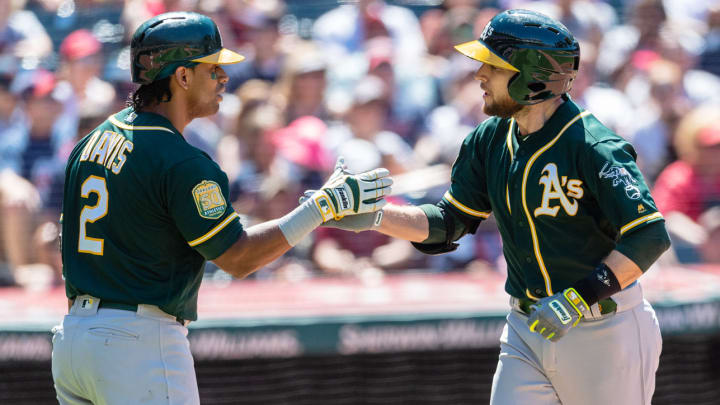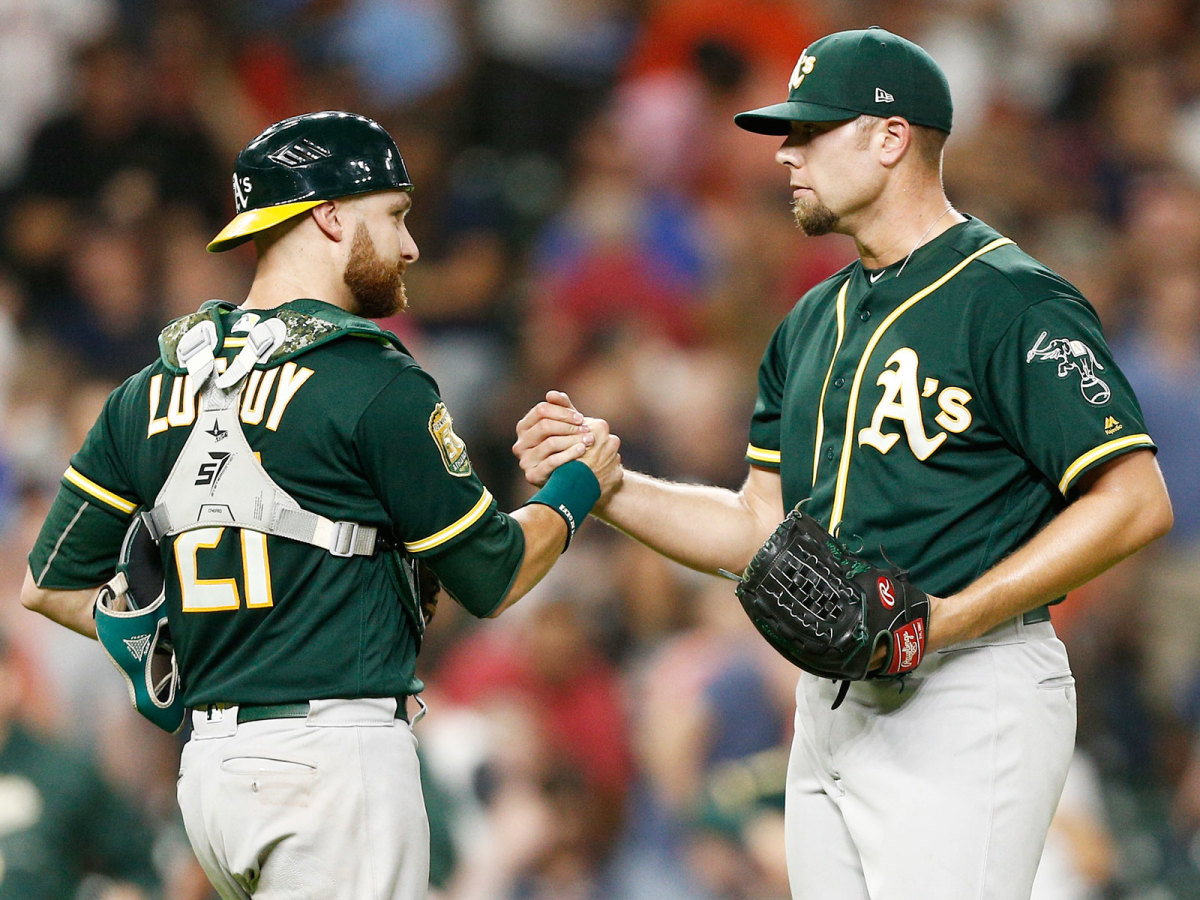The A's Are a Legitimate Playoff Contender

The American League’s playoff picture has been outlined for months now. Sure, there’s still some squishiness around the center—Red Sox or Yankees?—but the boundaries, just halfway through the season, are all but officially settled. In terms of simple probability, there’s not much room for surprises here, and in terms of sheer practicality, there’s far less.
Or, at least, that appeared to be the case as recently as a week ago. But Oakland’s recent hot streak has pushed just the tiniest bit of ambiguity into the room. Currently riding a 19–5 run, they’re now just five games out of the second wild card spot. That doesn’t give them fantastic odds, by any stretch of the imagination, and it doesn’t necessarily mean that their best course of action at the deadline will be pushing their chips in for a serious run. It does give them an interesting position in a polarized league, though: Oakland’s right in the middle of things, which means that they’re more or less alone.
Nothing demonstrates this situation so well as the playoff chances over at FanGraphs, which are the same projections used by MLB. One week ago, Oakland was given a 9.2% chance of making the postseason. That qualified them as only the longest of long shots, to be sure, but it also made them the league’s only team at the time with odds somewhere in the gulf between 2% and 87%. Four of the AL’s five playoff spots were locked in at or above 99.7%. The A’s chances weren’t even double-digit, but they were just enough to make them the sole club who might conceivably hold a wild underdog fantasy. Now? At Seattle’s expense, Oakland’s chances are up to 21.2%. Again, very much a long shot—but no longer such a crazy one.
So how have they pulled it off? Until this week, it was easy to chalk a portion of Oakland’s hot streak up to a cupcake schedule. After all, 10 of their wins over the last month have come against the dreadful trio of the White Sox, Tigers and Padres. Their most recent series seemed like a prime point for everything to come crashing down—four games against the Astros, perhaps the best team in baseball and one that had been thoroughly embarrassing the 2018 A’s, winning eight of the teams’ nine meetings so far this season. But further embarrassment wasn’t in the cards for Oakland. Instead, they won three of four and took their only loss to extra innings, just one bizarre walk-off error away from a sweep.

The A’s offense has been the heart of this surge, as has been the case for most of their success this year. This roster’s potential to rake made them something of a dark-horse candidate back in the spring—SI’s own Michael Beller picked them as the second wild card team in our preseason predictions—and that potential has been realized over the last month.
During Oakland’s 19–5 run, they’ve had the best offense in the American League outside of Boston. Jed Lowrie’s resurgence has continued apace, with a 1.038 OPS in this recent stretch, and he’s been backed up by hot streaks from Stephen Piscotty (.999 OPS) and Mark Canha (.925). Meanwhile, Khris Davis is riding a fourteen-game hitting streak, and the July 3 return of Matt Chapman from the disabled list has provided a boost, too. And Oakland’s bats get especially hot when the game is on the line. They’ve been baseball’s best-hitting team deep into games all season, with an .828 OPS in the seventh through ninth innings while no other team is above .800. Look no further than their series against Houston to see what that can do: 11 of their 21 runs in those four games came in the seventh or later.
But what Oakland’s pitching staff has done lately might be even more remarkable—not because they’ve excelled more than the offense, but because they’ve had to work so shorthanded. The club has an entire rotation’s worth of starting pitchers on the disabled list right now. Daniel Mengden, Andrew Triggs, Kendall Graveman, Paul Blackburn, and Daniel Gossett are all currently injured, and that list only made its way down from six men to five after Trevor Cahill was activated on Thursday. Their depth was compromised before the season even started, losing both Jharel Cotton and top prospect A.J. Puk to Tommy John surgery. They’ve been forced to make good use of names like Chris Bassitt, who missed all of last season after facing unexpected setbacks while recovering from Tommy John surgery, and Edwin Jackson, who’s on his record-tying 13th major-league team and somehow still has yet to reach his 35th birthday. But the bullpen remains strong, anchored by a career year from Blake Treinen, and the rotation’s managed to be strong enough. The result? Not quite brilliant, but far more serviceable than their injury record would have you guess. During the team’s recent run, the pitching staff’s 3.90 ERA has been the fifth-best in the American League.
The A’s are still only just barely on the fringes of the wild card race, and the case for selling at the deadline is probably stronger than the one for buying. But this is the best that they’ve been in quite some time—they haven’t been so many games over .500 since the end of 2014—and the fact that buy or sell? can be seen as a question at all is worth some excitement. The American League’s middle is hollowed out right now, but the A’s have been thriving in the empty space left behind.
